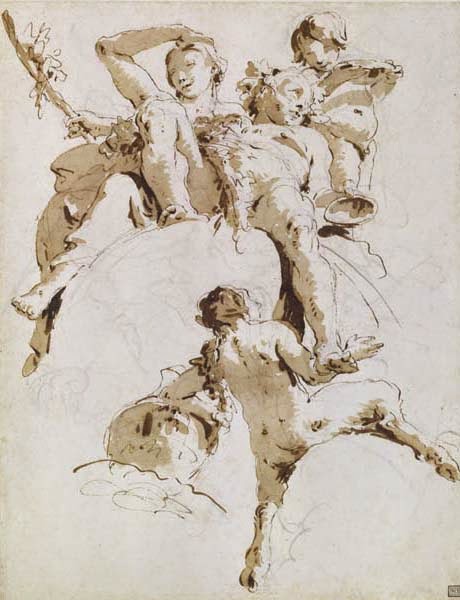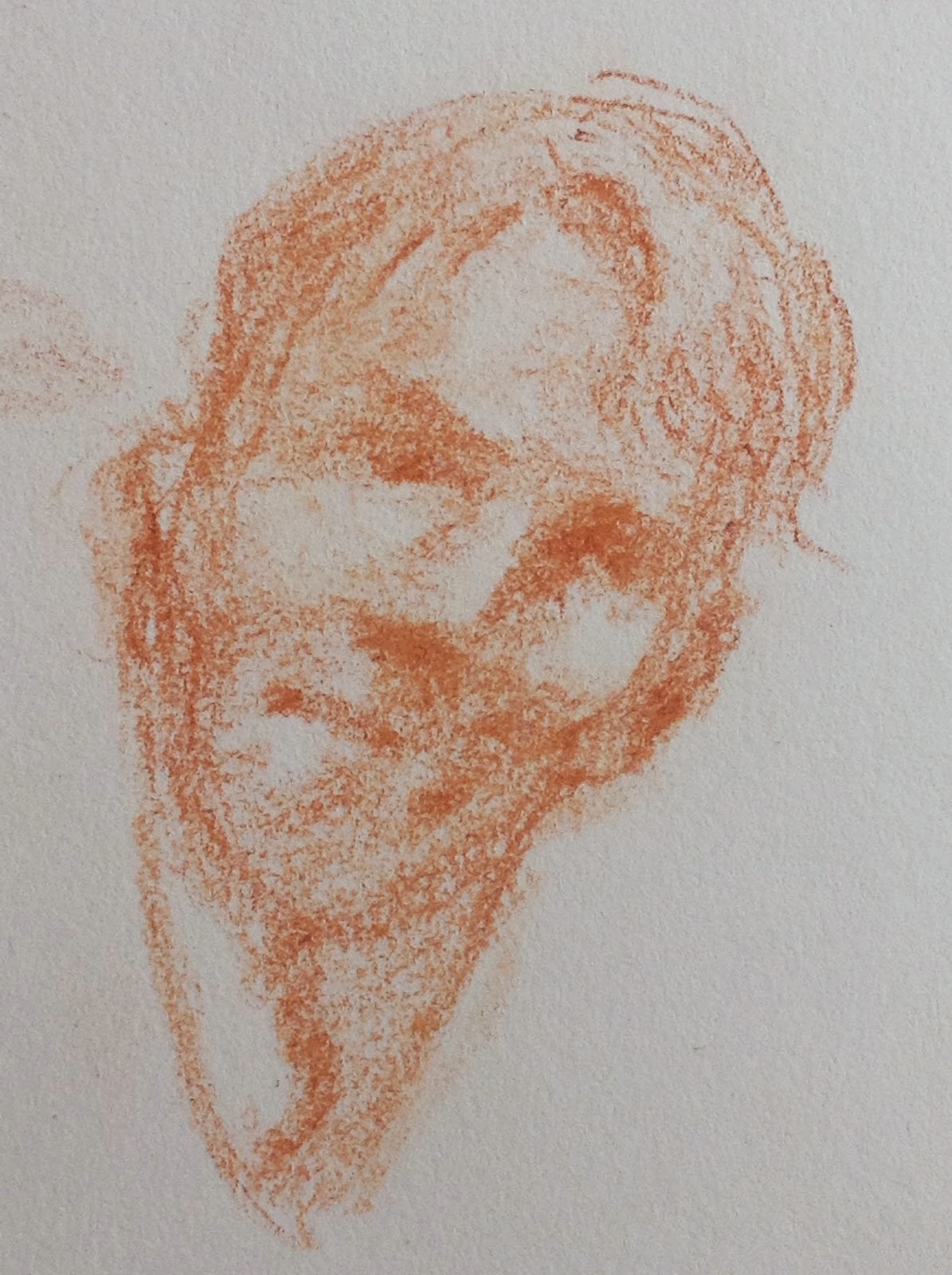 |
| Michael Whynot. Figure study in red chalk. |
 |
| Michael Whynot. Figure study in red chalk. |
I have written several times that the ability to draw from imagination is indispensable to the artist, but I would like to emphasize the point once again. The imagination is an infinite resource and once the artist learns to draw from it, vast compositional possibilities open up for us.
Imagine any scenario you can; from battle, religious, historical to fantasy themes. Now picture that scene in your mind's eye: what are the figures doing, where is the light coming from? Then what if you could draw, paint or sculpt that scene that you just imagined? Setting up multiple models and all the required props is possible, but could be a major undertaking of both money and time, depending on the complexity of your vision.
Michelangelo undertook a vast project when he agreed to paint the ceiling of the Sistine Chapel, and he surely used models to help refine some of the poses, but the concept and the majority of the work was made possible by his wondrous ability to draw the human form from his imagination.
The two drawings, above, were drawn today from my imagination. As I endeavour to perfect this faculty, I can see an incredible range of compositional and narrative roads leading in every direction. I'm not sure how far down those roads my ability will allow me to travel, but it promises to be an interesting journey.





















